Scouse
Established Member
Ok. So I thought that rather than simply ask questions and read other peoples stuff, I would make a meaningful contribution to the life of the forum by putting up a few pictures of my latest restoration.
Having recently discovered that my small Leytool drill was not in fact powered by Revolutionary Marxist Pixies, I felt confident that it was unlikely that my pillar drill was subject to a similar propulsion system. I could see the cogs on this one.
So armed with a wire brush and some sandpaper, here is what I did.
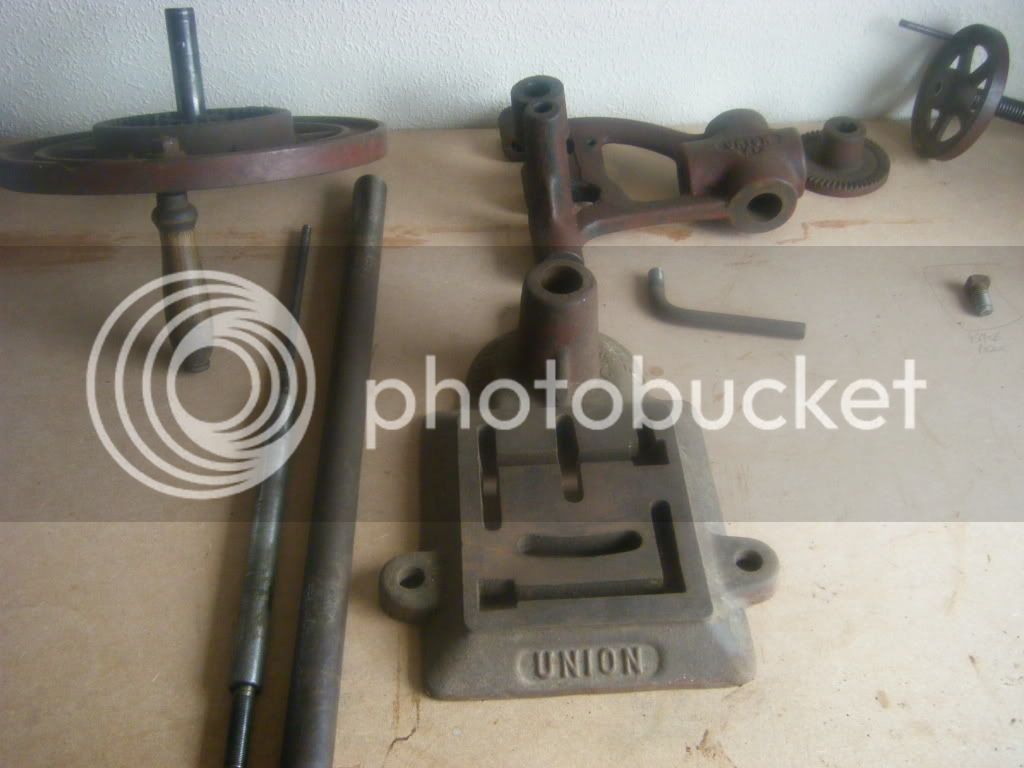
Beginning with an unpromising pile of rusty bits, I began to scrubb.
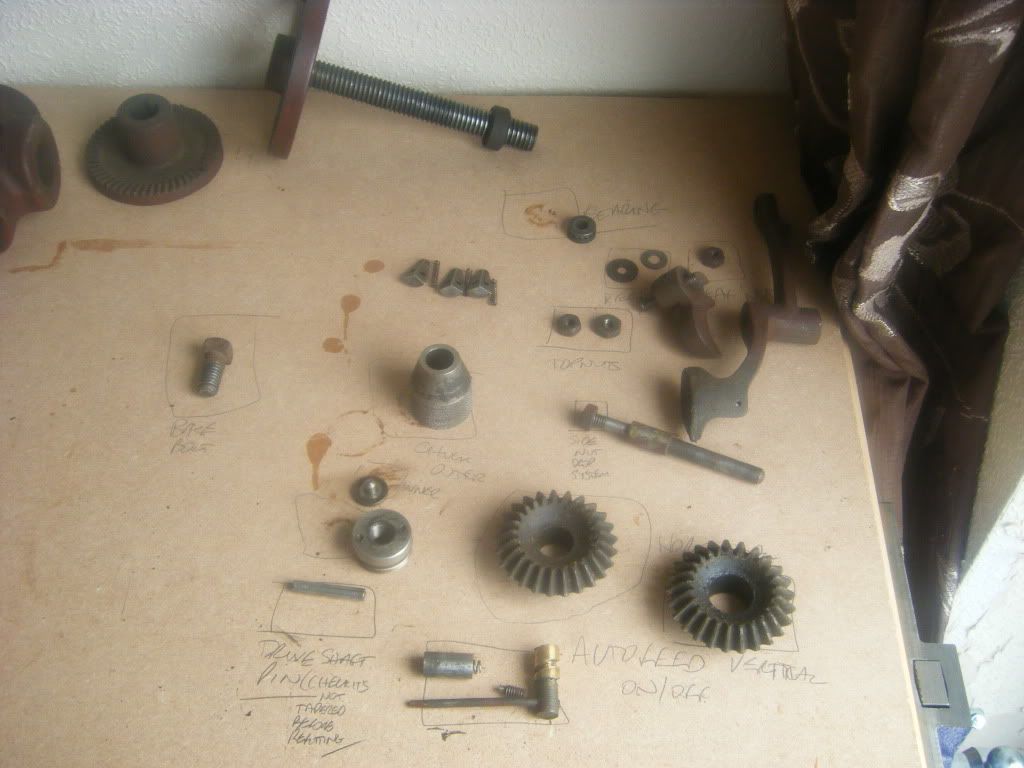
More rusty nuts etc
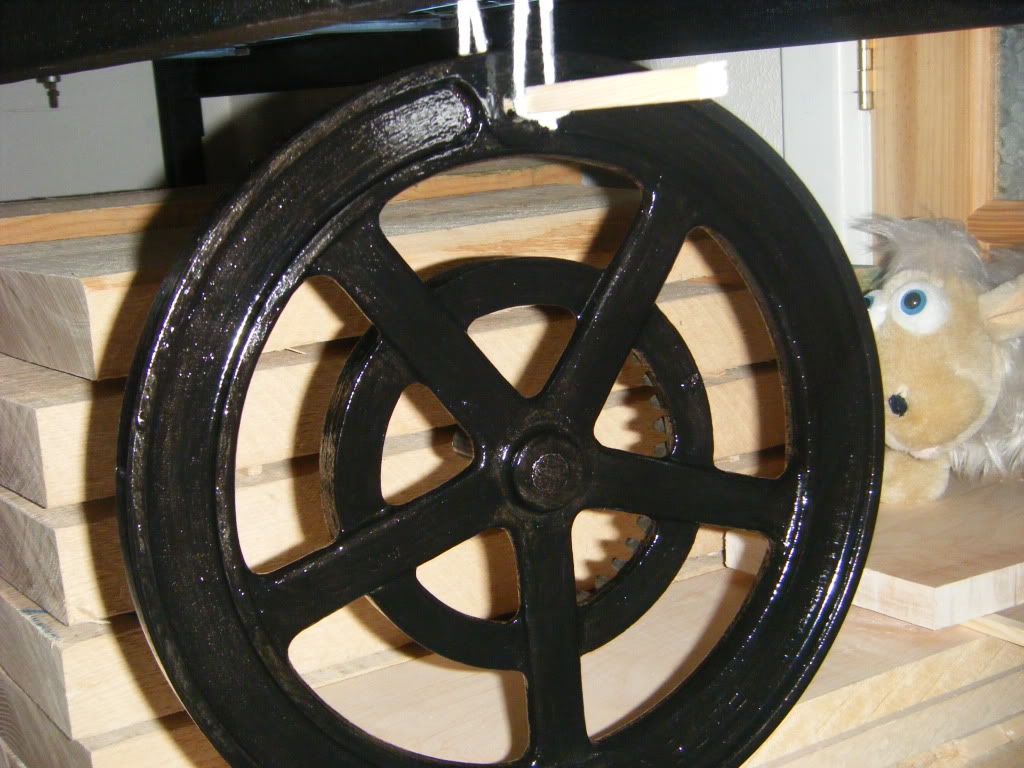
At this point, Trevor the Sheep reminded me that I was very close to the wood with a can of Hammerite. I explained that it would be ok, and that the ash was in no danger. He said he would stand by with a rag just in case.
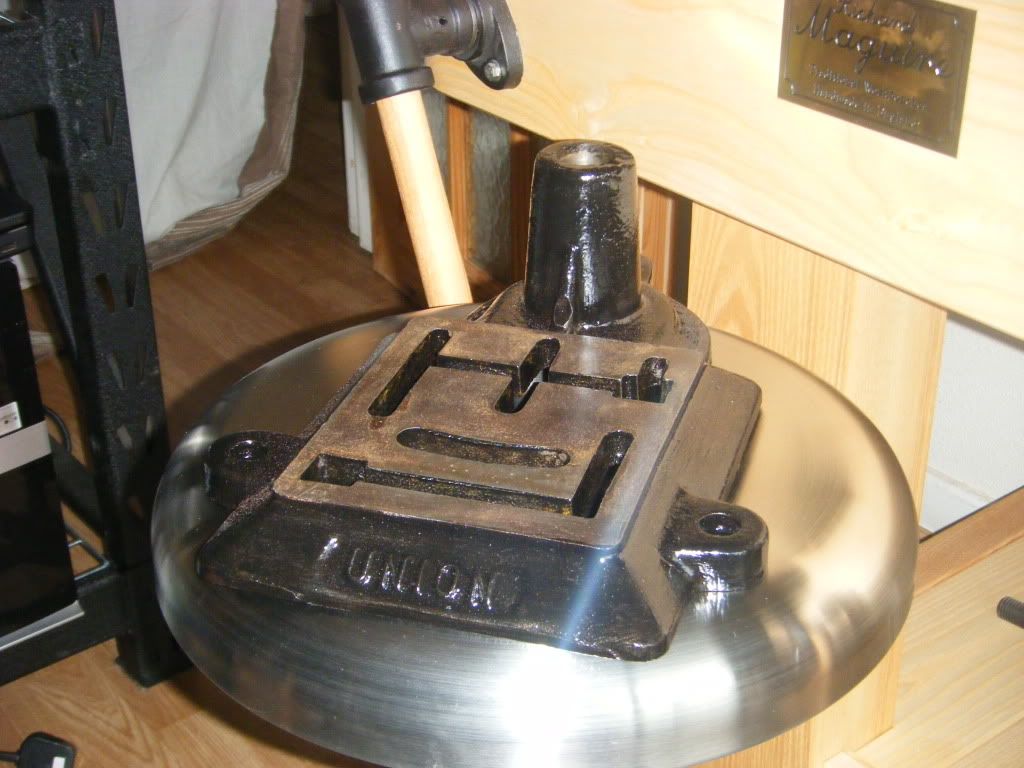
A shiny bottom. I tried different paint on this, but it didn't cover very well, so I returned to Hammerite.
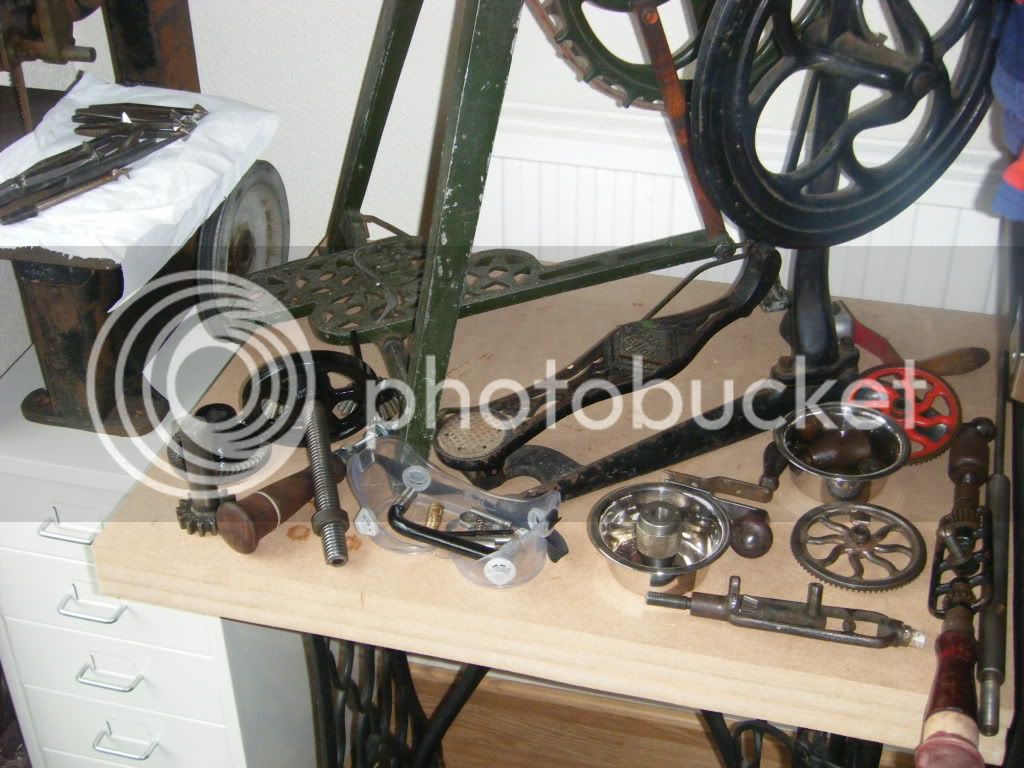
Some bits, including the replacement handle I made out of one from a scrap Millers Falls number 2. Also a few projects for later, Hobbies fret saw and a JCB bandsaw which will be renovated and converted to treadle power on the Singer base you can just see under the MDF top.
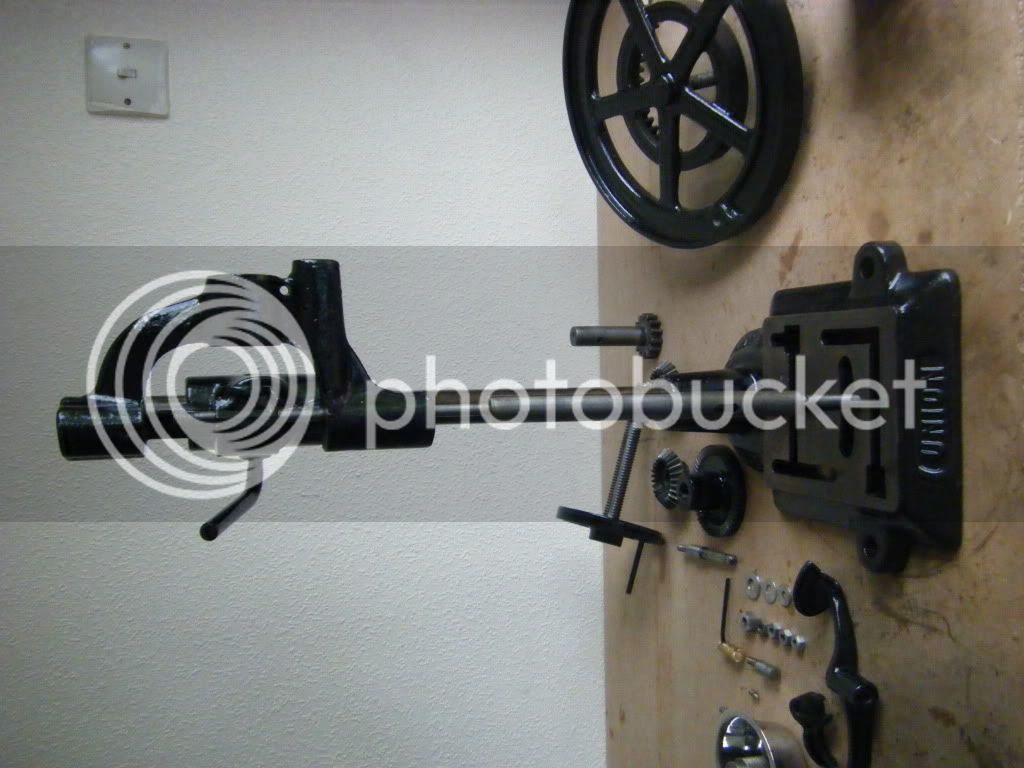
Beginning reassembly. At this point I had to send Trevor the Sheep to the shops because he was freaking out at the amount of oil and grease near the new workbench.
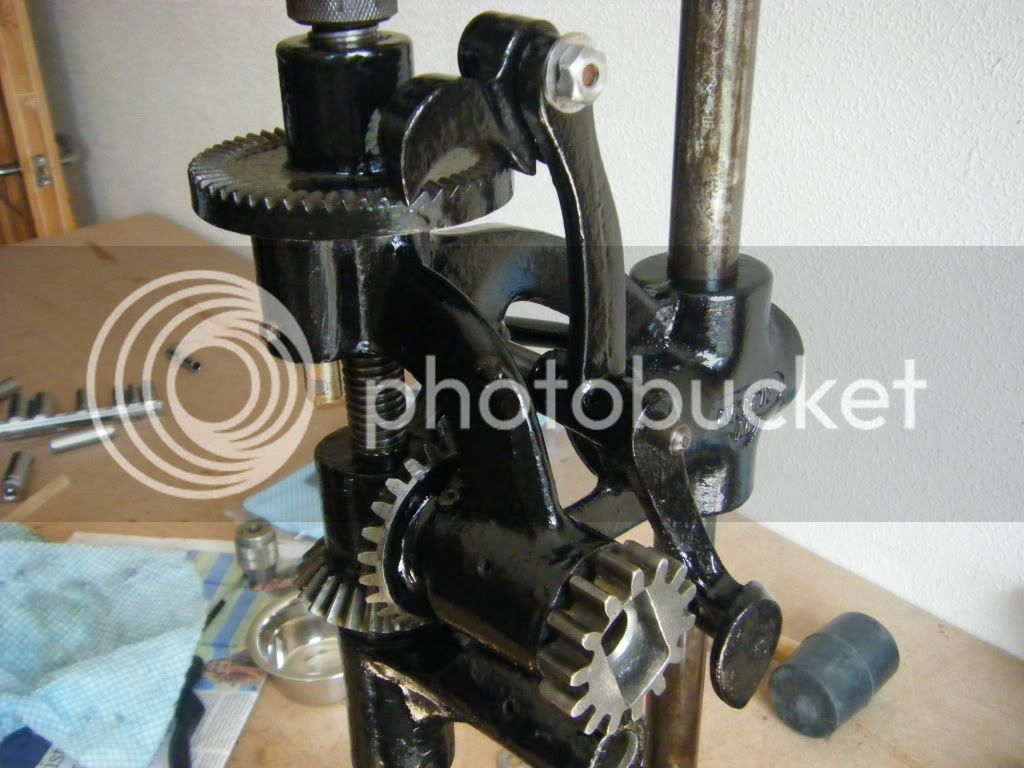
Fiddly bits. Trevor returned with custard creams, a chicken and mushroom Pot Noodle and a more relaxed attitude, thank goodness.
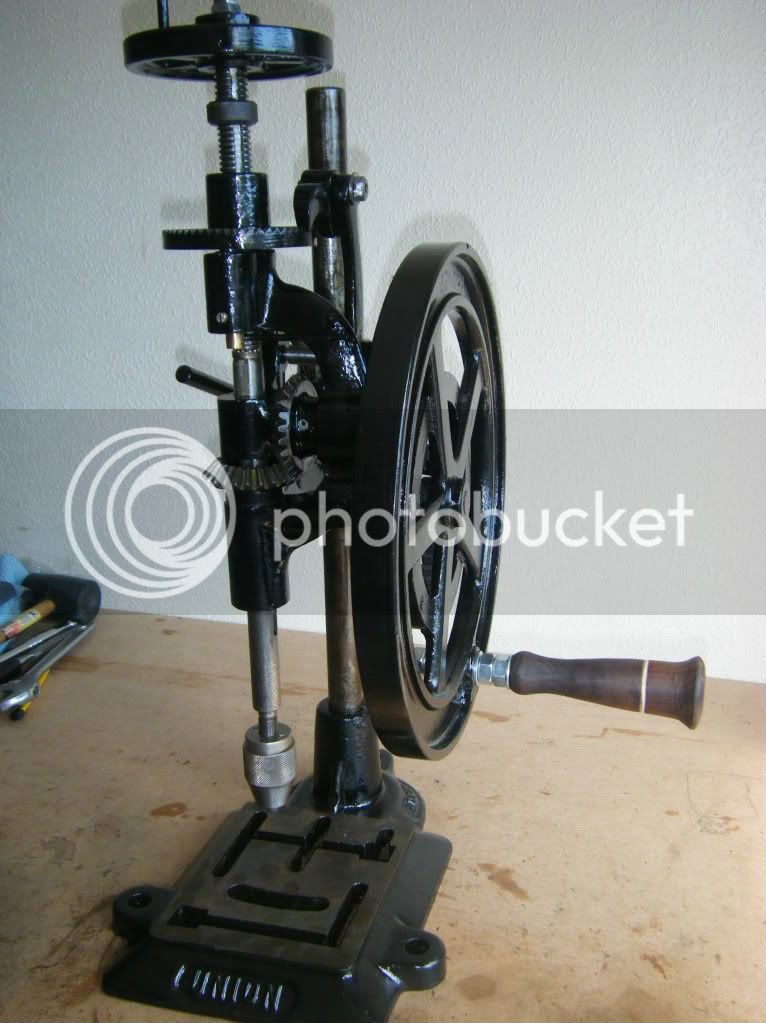
The finished article. The sheep was sulking in a corner and wouldn't have his photo taken. The big baby.
Next project will be the bandsaw. I haven't had a proper look yet, the side door is siezed but, like the Leytool drill, I suspect it to be powered by a combination of magic and fairy-tale folk; Goblins, this time. They used to pull on the blade and make it go round, but they appear to have established a system of 17th century indentured labour whereby they employ Gnomes from the front garden on fixed term contracts in exchange for travel and accomodation to the Back Garden New World. The threat of treadle power turns them quite militant, and we don't want another Boston Tea Party...
I never thought restoring hand tools would be such a challenge.
El.
Having recently discovered that my small Leytool drill was not in fact powered by Revolutionary Marxist Pixies, I felt confident that it was unlikely that my pillar drill was subject to a similar propulsion system. I could see the cogs on this one.
So armed with a wire brush and some sandpaper, here is what I did.

Beginning with an unpromising pile of rusty bits, I began to scrubb.

More rusty nuts etc

At this point, Trevor the Sheep reminded me that I was very close to the wood with a can of Hammerite. I explained that it would be ok, and that the ash was in no danger. He said he would stand by with a rag just in case.

A shiny bottom. I tried different paint on this, but it didn't cover very well, so I returned to Hammerite.

Some bits, including the replacement handle I made out of one from a scrap Millers Falls number 2. Also a few projects for later, Hobbies fret saw and a JCB bandsaw which will be renovated and converted to treadle power on the Singer base you can just see under the MDF top.

Beginning reassembly. At this point I had to send Trevor the Sheep to the shops because he was freaking out at the amount of oil and grease near the new workbench.

Fiddly bits. Trevor returned with custard creams, a chicken and mushroom Pot Noodle and a more relaxed attitude, thank goodness.

The finished article. The sheep was sulking in a corner and wouldn't have his photo taken. The big baby.
Next project will be the bandsaw. I haven't had a proper look yet, the side door is siezed but, like the Leytool drill, I suspect it to be powered by a combination of magic and fairy-tale folk; Goblins, this time. They used to pull on the blade and make it go round, but they appear to have established a system of 17th century indentured labour whereby they employ Gnomes from the front garden on fixed term contracts in exchange for travel and accomodation to the Back Garden New World. The threat of treadle power turns them quite militant, and we don't want another Boston Tea Party...
I never thought restoring hand tools would be such a challenge.
El.





